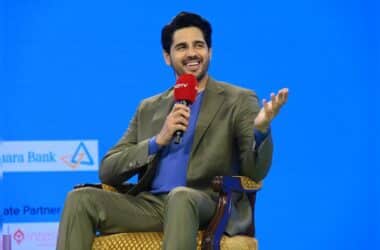[ad_1]
Unlike many designers, much of the work of the costume designer Ellen Mirojnick is contemporary. Her filmography is evidence of the impact she has had on the look and feel of some of the most iconic films of the 1980s and ’90s: Paul Verhoeven’s “Basic Instinct” (1992) and “Showgirls” (1995), Adrian Lyne’s “Fatal Attraction” (1987) and “Unfaithful” (2002), and Andrew Davis’s “A Perfect Murder” (1998). These films helped define the distinctly elegant yet dangerous aesthetic of the erotic thrillers that once dominated the box office.
After more than 40 years in the industry, Ms. Mirojnick has received her first Oscar nomination for her austere, sharply tailored looks in “Oppenheimer,” Christopher Nolan’s blockbuster biopic about the physicist who led the effort that produced the first nuclear weapons. While she has decades of expertise creating an eclectic variety of costumes, ranging in mood from the understated to over-the-top, her work does not span the many costume dramas that are typically favored during awards season. Instead, her most recognized characters often feel fashionable in a way that is more modern and real.
In a recent video call, Ms. Mirojnick reflected on eight of her favorite looks from her career.
‘Fatal Attraction’ (1987)
“Fatal Attraction” marked the first of many collaborations between Ms. Mirojnick and the actor Michael Douglas. “What was fascinating about that particular moment in time was that Adrian Lyne, Michael Douglas, Glenn Close and Anne Archer were all kind of at the same level,” she recalled. “It was a great way to begin a working relationship, because everybody had equal stakes in front of them.”
The designer and Mr. Douglas originally had differing ideas of how his character should dress. Her interpretation was “much more classic, fashionable and monochromatic,” she said. After rounds of fittings and discussions about “honing his wardrobe to a place that felt very New York and very cool and attractive in a way that was different from how we saw a lawyer in New York in prior films,” she said, “we finally got in a groove that was simpatico, and we were able to create a character that had all of those aspects and felt very real.”
‘Wall Street’ (1987)
Just a few months after “Fatal Attraction” wrapped, Ms. Mirojnick and Mr. Douglas worked together again on Oliver Stone’s “Wall Street.”
“When you work with an actor or director repeatedly, you can have an open dialogue that doesn’t have any hidden meanings,” she said. “Gordon Gekko was a man that was absolutely seductive.”
Mr. Douglas was immediately on board with the costumes. “From the day we did the first fitting, Michael was in heaven,” she said. “He knew exactly who he was. Once an actor goes into the pieces of costume that you’ve designed, my goal is to help him disappear into the character, and instantaneously, that happened.”
‘Basic Instinct’ (1992)
“In designing the white dress and white coat, it started as a choreography,” Ms. Mirojnick explained of designing the costume worn by Sharon Stone as the enigmatic writer and prime suspect, Catherine Tramell, in the film’s interrogation scene. “She takes off her clothes that she’s wearing when they come to get her. Michael Douglas watches her. She has to step into the dress. She has to zip it up by herself, grab her coat, and leave. It’s a purposeful scene, and it has to work with an ease that’s beautifully rhythmic.”
Stone’s outfit instantly establishes her dominance, and, soon enough, she sheds the coat and infamously uncrosses her legs. “The one thing that Sharon and I talked about was her ability to move freely in this costume, like a man sitting in a chair and spreading his limbs,” Ms. Mirojnick said. “She wanted that same kind of freedom, and that was the basis of that design.”
‘Chaplin’ (1992)
More than 30 years ago, Ms. Mirojnick worked on “Chaplin” with Robert Downey Jr., a supporting actor nominee for this year’s “Oppenheimer.” The film began shooting in Europe with a different costume designer, then moved to the U.S., where Ms. Mirojnick became involved.
Shortly after coming on board, she received a call from Mr. Downey asking her to redesign his costumes. “I said, ‘I can’t, I don’t have enough money to do that,’” she said. “And he said, ‘You’re going to have to do it, and you’ll see why.’”
After seeing the original costumes, Ms. Mirojnick said, “I understood what he was saying. They were not really cut in harmony with his body, in a way that actually felt correct for Chaplin,” she recalled.
She added: “We took the Little Tramp costume and cut it all apart. He stood in the mirror as we redid it. Within 15 minutes, Robert Downey Jr. faded away and Charlie Chaplin emerged. It sent chills up and down all of our spines.”
‘Showgirls’ (1995)
Ms. Mirojnick recounted a moment during fittings in which Mr. Verhoeven called Gina Gershon’s stage costume of a nude-tone, volcano-themed bodysuit “far too covered up.” “We took the scissors and we started to cut it all up,” she said. “It wound up being virtually nothing.”
As for Elizabeth Berkley’s pivotal Versace dress? “I remember buying it in Las Vegas in the Caesars mall,” Ms. Mirojnick said. “It was the perfect dress and it made her appear to be a bit more classy.”
Unless the script explicitly calls for it, as it did in “Showgirls,” Ms. Mirojnick said she typically avoids buying from fashion designers. “I find building costumes from the ground up much easier because I know what I want,” she said.
‘Cinderella’ (1997)
Unlike some of her other projects, Ms. Mirojnick said, “We didn’t have any money to work with, so we had to be really creative.” In order to create the film’s colorful Art Nouveau-inspired looks on a budget, Ms. Mirojnick bought lots of Indian fabric. “It did so much for us, and it didn’t cost a lot of money to be able to create the costumes from it,” she said.
With a cast of pop stars and stage actors, the energy on set was infectious. Ms. Mirojnick was also endeared by the TV movie’s star. “Brandy was so young and so alive and so excited to become Cinderella,” she said.
‘A Perfect Murder’ (1998)
“The first and foremost thing,” Ms. Mirojnick said, “is to understand the actor, the actor’s body, and what silhouette you want to create.”
“I always pay attention to their body language and how they walk and how they telegraph,” she added. In the case of the film’s star, Gwyneth Paltrow, Ms. Mirojnick said, “She could wear anything. She was very chic. She was born and raised in New York. She had a keen eye and a keen aesthetic,” which helped with the collaboration between star and designer, Ms. Mirojnick said.
“We talked about clothes and what they convey and how they’re made in a very deep way,” she said.
One of Paltrow’s signature pieces is a cozy, oversized coat. “The coat is enveloping,” Ms. Mirojnick said. But its bulk, she said, is offset by the sleek column of a long skirt and heeled boots. “When the actor knows how to wear something and knows how to feel about something when they put the garment on, that’s when it sings and it really telegraphs that luxuriousness,” she said.
‘Oppenheimer’ (2023)
“We might think of scientists as nerds, but these scientists led by Oppenheimer were the rock stars of their time,” Ms. Mirojnick said.
Oppenheimer’s Los Alamos look is particularly potent. “He walks into his power in a way that separates the time periods, and he comes into his own,” she said.
Ms. Mirojnick conveyed this transitional moment through careful details: “We changed the shape of his suiting slightly. We brought in the shoulders. We made the pants a bit more voluminous. And we used colors akin to a New Mexican landscape married with the intensity of the blue of his shirt, the solidness of his tie, the accent of his silver engraved belt buckle, and of course, his famous hat and pipe.”
“He planned this iconography in a way that was powerful,” she said.
Source link







